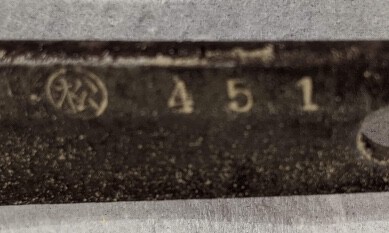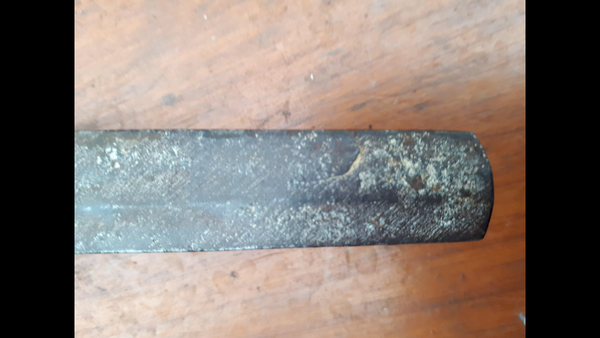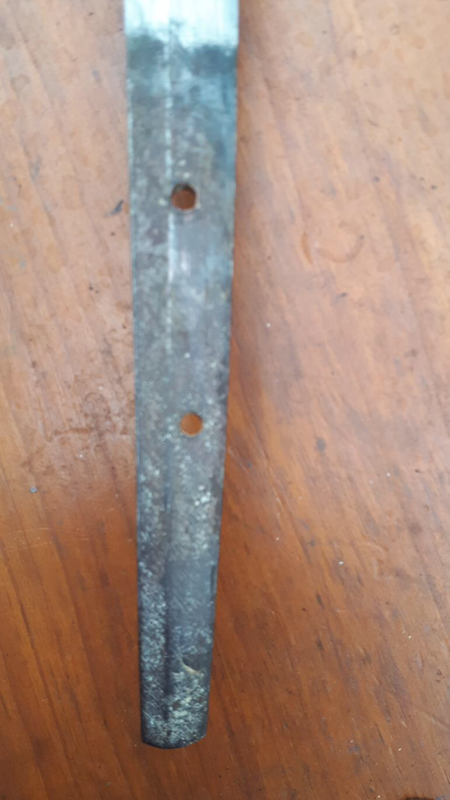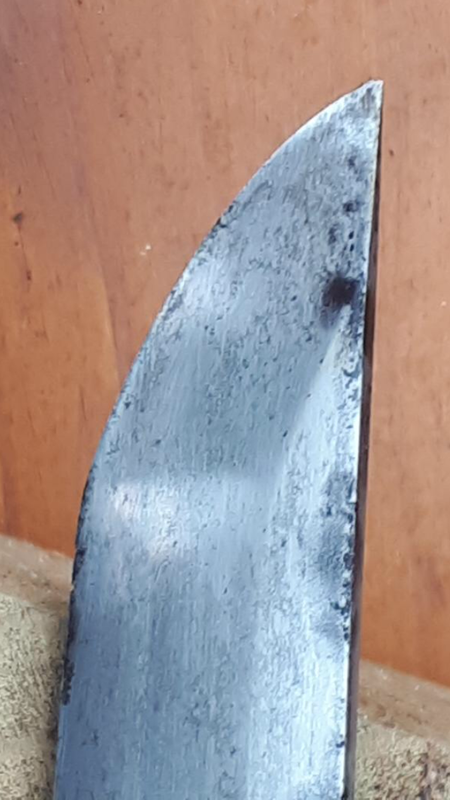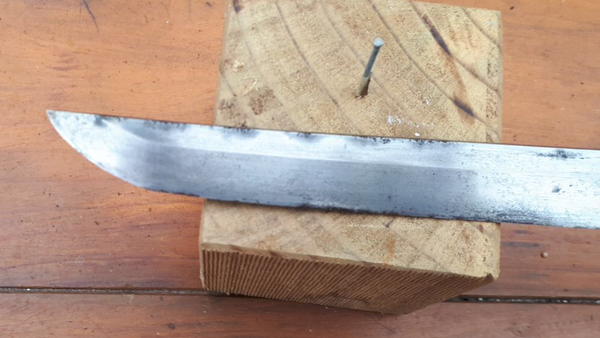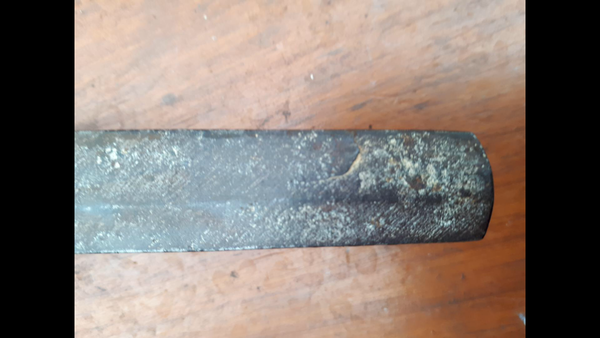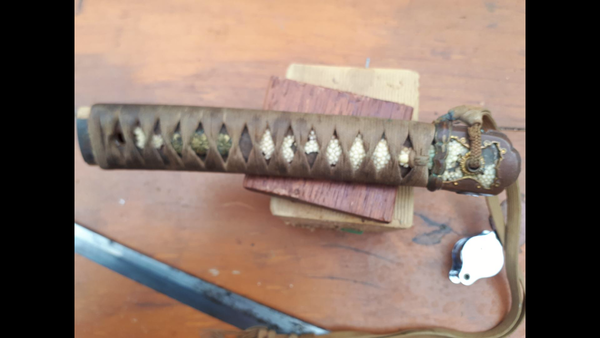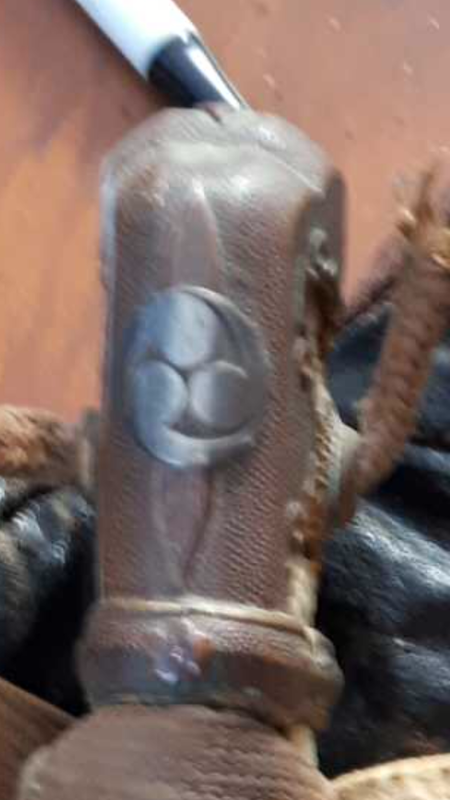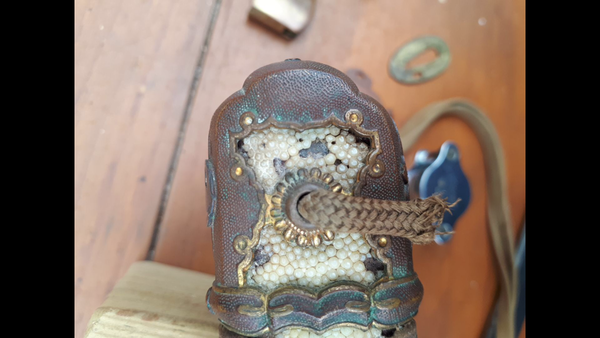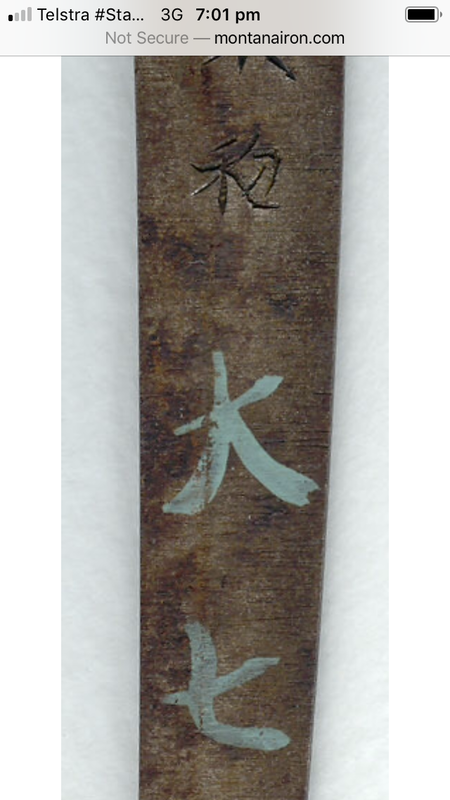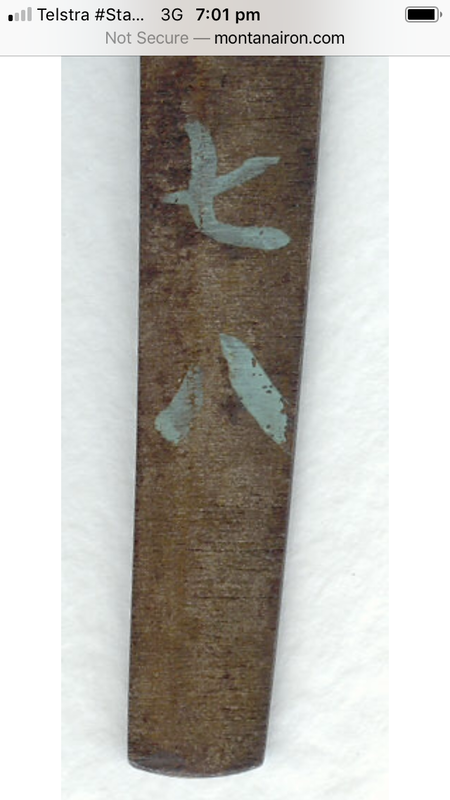
davidequis
Members-
Posts
36 -
Joined
-
Last visited
Content Type
Profiles
Forums
Events
Store
Downloads
Gallery
Everything posted by davidequis
-
Hi Bruce, have only just caught up with this - amazing detective work. if you look at the chart your created of the blade with the matsu stamp, the last 3 have a different stamp. Do those characters match other grades of tamahagani? I am more convinced that the matsu is a grade/quality stamp not a random army stamp
-
The cover page looks good. The pic of the mystery matsu stamp used by the Munetoshi brothers is an interesting choice. I have been exploring bladesmithing recently. In traditional Japanese blade production, matsu (pine) charcoal was as important as tamahagagane. Matsu charcoal could be cut by apprentices to the perfect size, and would burn with a perfect heat to produce perfect (nihonto) blades - other charcoals were inferior. i believe the matsu stamp is a mark of quality or authenticity, rather than an arsenal stamp.
-
The Yamagami brother’s matsu stamp mystery. I have come across several references to traditional Japanese sword smithing where materials are mentioned. There is the obvious tamahagane, but they also mention pine charcoal as essential in nihonto production. This pine charcoal is called matsu-zumi Articles state that in ww2 the army supplied tamahagane to rjt smiths while the province was required to supply matsu-zumi. Articles also state that tamahagane was in short supply and strictly controlled. One would expect that matsu-zumi would also be scarce. Perhaps, in the mix of materials and methods used in war production, identifying pine charcoal as a material was important. Perhaps, like the military star-stamp, the matsu stamp is the A seal of traditional materials/methods.
-
How does an 80 year old blade retain such condition? Or has it been re-polished?
-
An old blade mounted for ww2. Returned from PNG. Probably acquired in Rabaul. Some suggestions from another thread in here that it could be, “kazu uchi mono” close inspection of nakago, shows file marks end between mekugi-ana. The bottom section shows much older patina. The “new”section, from end of file marks to ha shows a hammered surface and younger patina. The “balance” of the blade seems too thin at the machi. The suggestion that it has been shortened seems to be supported.
-
Yes, in the process. Have a letter from my grandpa to my nana, in which he mentions a bit of his time in Rabaul in September, 45. “70,000 Japs (pows) just down the road”.
-
Many thanks for the information and feedback.
-
-
Thanks Dave, I posted fewer pics in Nihonto because I assume that the Koshira are ww2 and not what the Nihonto guys want to see. thanks for your input too Bruce.
-
This is a family heirloom and not for sale. Just seeking information to add to its story - heirlooms without stories are just objects.
-
One mekugi-ana used with wooden peg, in the tsuka
-
I posted this in military swords. It was suggested that this forum might be able to provide more information. It was brought back from PNG. My Grandpa fought on Kokoda, sanananda, gona, buna, & Boganville, then to Rabaul and repatriation of pows through to 47. Provenance is solid but place of acquisition is obscure. My uncle (my grandpa’s son) doesn’t remember but thinks they were handed out to officers in Rabaul (my pa by that stage was battlefield promoted to lieutenant colonel) my childhood recollection of my grandma’s story is that it was presented to him on surrender somewhere. The Rabaul version is probs more likely. Expert feedback would be greatly appreciated. many thanks in advance total length 93.5cm
-
-
-
It was brought back from PNG. My Grandpa fought on Kokoda, sanananda, gona, buna, & Boganville, then to Rabaul and repatriation of pows through to 47. Provenance is solid but place of acquisition is obscure. My uncle doesn’t remember but thinks they were handed out to officers in Rabaul (my pa by that stage was battlefield promoted to lieutenant colonel) my childhood recollection of my grandma’s story is that it was presented to him on surrender somewhere. The Rabaul version is probs more likely. Expert feedback would be greatly appreciated. many thanks in advance total length 93.5cm
-
Soooo what does that mean???
-
-
I found the #443 on this site. it is dated November 1942 not 43, which places it’s sale within proximity of the other 1942 numbers, but still after #451 i can’t post pics coz it says I am exceeding the quota. It was posted by daddycool in 2016, “my 1942 Munetoshi “
-
Found this, it could be the “2352” in the survey or it might be a new sword. I believe it is an over stamp, possibly reflecting the army order to obscure production details. There are several points with this example that should be considered. 1. It does not have polisher marks. 2. It’s nakago tip is kurijiri 3. One mekugi 4. Original number 23 or 23? With the last digit overstamped with poorly aligned 53. 5. Nakago tip is damaged. This supports the theory that numbers are in production sequence and dates reflect point of sale. This looks like an early run, possibly re-made (shortened) sub-standard historic blade that sat in the shop being rejected until shortages and desperation made it acceptable, upon which, it leaves the shop in 1943 and is star stamped as traditional. It would make sense that the smiths dated the blades as they left the shop, rather than Tokyo dating when they receive them. It would be useful reviewing the other 4 digit blades to see if they are overstamped, with similar irregularities.
-
Analysing the data. Date of manufacture and numbers are not sequential. Possible reasons Option 1 Dates reflect the time of production and numbers are part of a larger allocation pool of area/region supply. I think this option is unlikely. The theory is disrupted by the nov 1943, #443, that sequentially belongs to the oct/nov 1942 numberset. This theory is further disrupted by the oct/nov 1942 numberset being out of sequence (oct 451, nov 422 & 433) Option 2 The numbers do relate exclusively to the brother’s production sequence, however the dates reflect when the sword actually left the business, rather than the date of production. This would explain how number 443 can leave the shop a year later than numbers 422, 433 & 451. It also explains why 451 leaves the shop before 422 & 433. It would also make sense that any smithy would have a stock of swords for customers to choose from. Customers (private or government) would not pick based on number sequence but on aesthetics, materials and price. Similarly, Smith’s would price on aesthetics, method of manufacture (traditional/non-traditional) and materials (tamahagane/mill steel) not number sequence. This theory is supported by the total production numbers as a reflection of output. The 1944 #2352 suggests wartime production 1939-1944 of 2352 swords at a production rate of 32/month from both brothers, or 16 each, which (i read somewhere) was the maximum traditional output. Sooo why the Matsu stamp? If they did make 2352 swords from 1939-1944, there are 17 known examples making 0.7% survivors from their body of ww2 production. Looking at the matsu stamp there are 12 examples of which 8 have star (66%) verified by the government as traditional. The verdict on #451 without star is that it is traditional. I assume #11, #61 & #2352 are also traditional. The brother’s were traditionally trained and won awards - they made quality swords. It would make sense that at time of manufacture, when the brothers signed and numbered the tang they would also indicate its quality of manufacture and materials (the matsu). In a market flooded with military swords all with numbers, various government stamps and of varying quality, the brother’s wanting to clearly identify their brand would be logical. Why some matsu without star? The star is a government quality certification for government purchased blades. The matsu is the brother’s certification for quality blades. Thus, matsu without star is not government purchased. Welllll at least, that is my theory:)
-
My grandpa 🙂
-
Thank you to everyone who has offered assistance. I’m something of an addict atm. My Pa also brought a sword back from PNG... unfortunately not in my possession but hopefully I can get access. It’s provenance is better known and was surrendered to my Pa in bougainville - it might be special.
-
Thank you George, Your collection is special and information very educational. I’m very pleased that this sword has presented you and Bruce with new and confusing information with regard to matsu stamp🙂 I have provided both sides of nakago for you - definitely no star. What we know of provenance. It was acquired by a member of the Australian 4th field ambulance somewhere in PNG. We are in process of requesting his military record to identify potential dates and locations. He returned to Brisbane, where the sword sat in his house, preserved in cosmoline until he died and it passed to his grandnephew (my son). Research so far, suggests that it probably arrived in PNG with a reinforcement battalion that was relocated from Indochina to Rabaul in Jan, 1943. It makes sense that new recruits would be picked up in Nov/dec 42, with their newly acquired blades. Some advice on mekugi, the front mekugi is longer than the rear - is this usual? The front mekugi was stuck - somewhere in its history someone had tried to remove it and stripped the head. Do we try for a replacement mekugi or spot weld the head to build up steel and cut a new slot or use a wooden peg? The existing mekugi is not going back in due to the risk of never getting it out again. many thanks
-
The leather cover on the saya does not come off. Possibly put on wet and shrunk or just shrunk with age. What can be seen of the saya under the leather, has the same rough look and texture of the tsuka.

